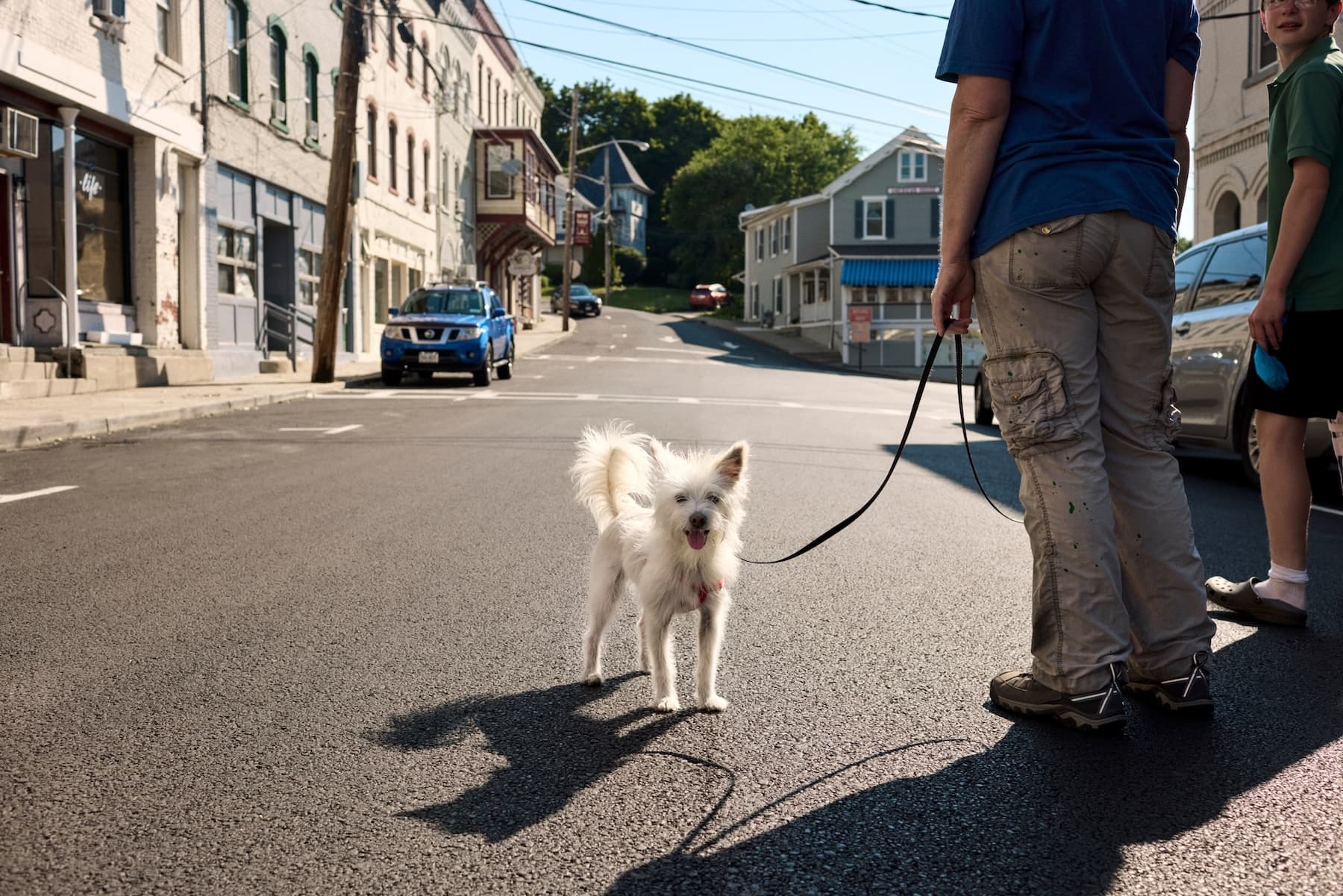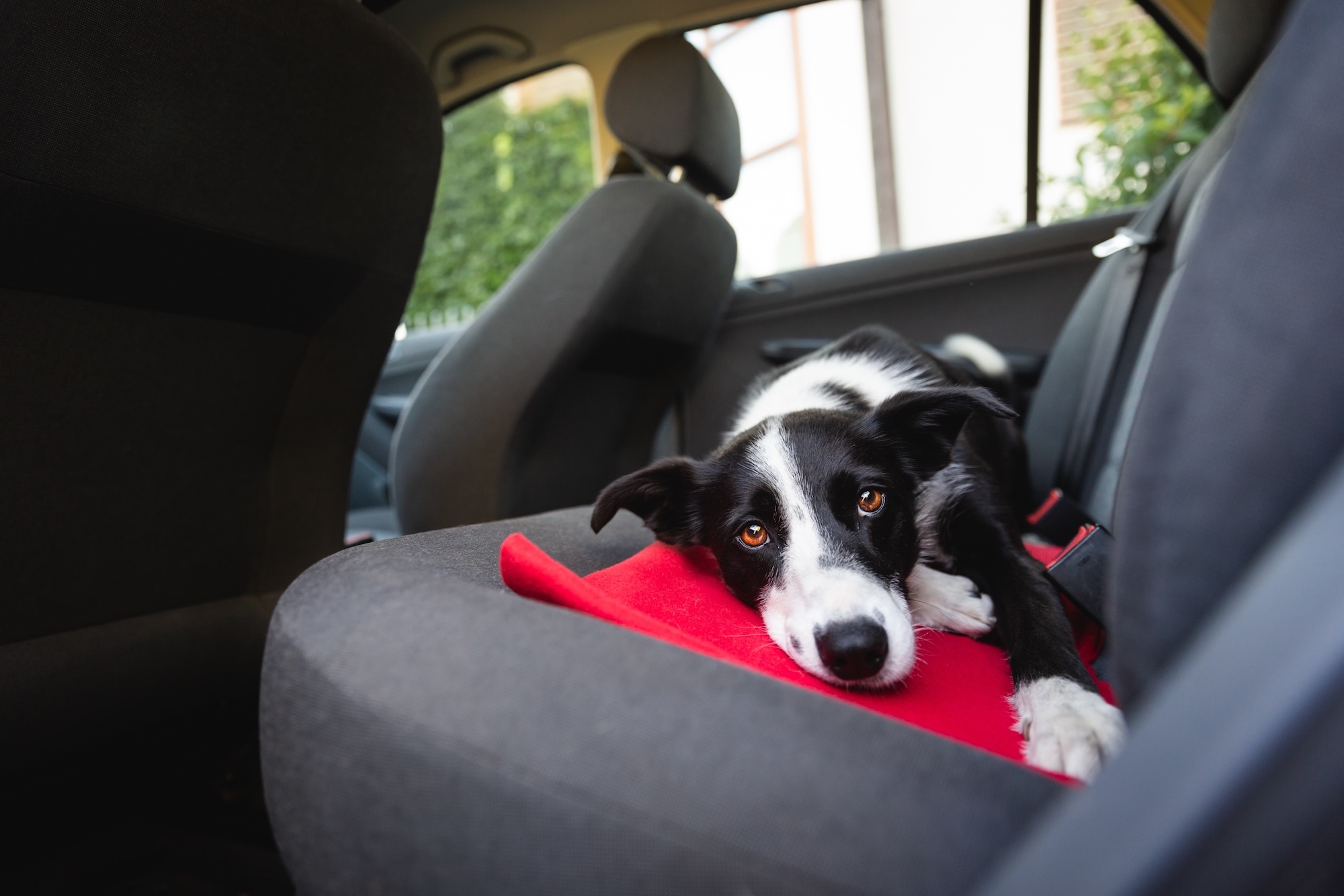All dog people know that having a pet adds another layer to keeping your home clean—hello shedding, muddy paws and post-bath zoomies, not to mention the occasional potty accident or vomit. Although a little extra maintenance is totally worth it, it’s important to make sure the products you use to clean up your home are safe for—or kept from—your dog.
How your dog can be exposed to cleaning products
There are several ways that household cleaning products can pose a danger to your dog:
- Ingestion: Your dog could lick, eat or drink a cleaning product, or chew on a container.
- Contact: If a cleaning product is spread on a surface and your dog walks over it, touches it or lies in it, their coat, skin or paws can be affected. Also, if your dog gets the product on their paws or coat and then lick themselves, they may ingest the product.
- Inhalation: Chemicals, perfumes and other substances can irritate or harm your dog’s respiratory system–including their nose, throat and lungs–if they inhale them.
Types of products to watch
Any type of cleaner can be harmful to dogs, including laundry detergent, dishwashing detergent, bleach, surface and window cleaners, drain cleaners, scrubs, oven cleaners, disinfectants, mold removers, carpet cleaners, and air fresheners.
But some are more dangerous than others, notes Renee Schmid, senior veterinary toxicologist with Pet Poison Helpline. Assuming large quantities haven’t been consumed, ready-to-use cleaners that are already diluted (that is, they don’t require you to add additional water) are more likely to cause minor irritation, such as mild stomach upset, mouth irritation or skin redness.
On the other hand, “products that have a big job to do, like open up a clogged drain, or clean a toilet bowl or an oven tend to be a lot more concentrated, and a lot more concerning for what we call corrosive damage,” Dr. Schmid says. “They can cause ulcers in the mouth, esophagus, stomach, and intestinal tract,” along with lesions on the skin and other serious injuries. Products that come in smaller bottles and require dilution, as well as dishwashing and laundry pods, are also dangerous.
If you’re not sure, look at the signal words on the bottle, she suggests. “They will typically say either ‘caution’ or ‘danger,’ and those usually have some meaning to them. The ‘caution’ signal word means significant injury is unlikely. With the ‘danger’ signal word, that means more heightened issues. We can expect to see some really significant damage if an animal is exposed to that.”
It’s also important to be especially careful with industrial-strength products, Dr. Schmid warns. “It isn’t uncommon for people to bring home industrial-strength products from their workplace, or they purchase it online and use it in their home,” she says. “Those can definitely be a much higher risk.”
Keep in mind that products labeled “ natural” or “organic” may still contain ingredients that are unsafe for your dog.
“‘All natural’ doesn’t mean that it’s necessarily safe, especially if it’s ingested,” Dr. Schmid says. “There are a lot of things that are natural that are very toxic as well.”
And when it comes to dangerous everyday products, keep an eye out for these, too: fertilizer, anti-freeze (it tastes sweet), certain types of mulch, paint, car oil, rat poison, and sidewalk salt.
How to keep your dog safe
There are several steps you can take to keep your dog safe from cleaning products.
- Store cleaning products in a closed or locked cabinet, ideally in a room or part of your home that your dog doesn’t frequent. If you can reach them comfortably, store them higher than your dog can reach
- Follow directions on the bottles for use, which often give a specific amount of time that people and pets should avoid the product while it dries or dissipates
- Along with the cleaning products themselves, keep rags, mops, and other instruments used for cleaning away from your dog
- Dispose of empty bottles carefully, especially if your dog tends to sniff around the trash or recycling
- Air out your space during and after using these products to limit inhalation exposure
What to do in case of exposure
It happens: Maybe your dog got into the trash and found a discarded bottle of something, or you’re visiting a friend or relative and your dog discovered their cleaning supplies. “Animals are so good at getting right under our feet and just getting into things,” Dr. Schmid says. “Even the most cautious of people can have that pet just sneak by and get into something they shouldn’t.”
Signs that your dog may have been exposed to a harmful substance include drooling, pawing at their mouth, red or raw skin, vomiting (sometimes with blood in it), loss of appetite, lethargy, abdominal pain (your dog may tense up or whine if you touch them there), diarrhea or blood in the stool.
Contact your vet right away, or an emergency vet if it’s outside your vet’s business hours. Take a photo of the product if you know what your dog got into, or keep a sample of your dog’s vomit or poop so the vet can test it.
You can also contact a pet poison control hotline, such as the Pet Poison Helpline or the ASPCA Animal Poison Control Center.




